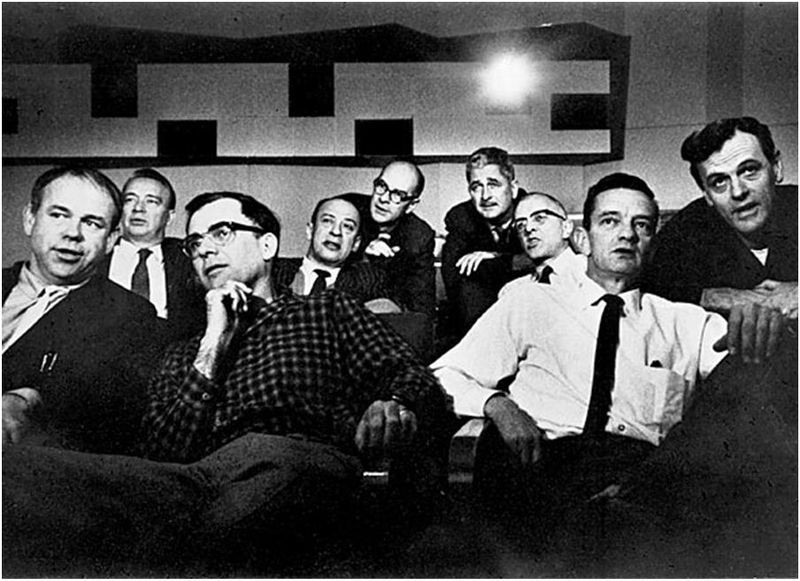

This year, the Computer History Museum honors Ed Catmull as a CHM Fellow. Fellows are unique individuals who have made a major difference to computing and to the world around them.
There are places today that college graduates dream of working. In the tech world, companies with names like Google, Facebook, Blizzard are among the wish-list for after-graduation jobs. Or maybe IBM, Apple, Microsoft—you name your favorite. All companies have peaks and valleys, there are the hottest ones at the moment, and their moment comes and goes. The battle is to stay on top, create great products, hire the best talent, keep moving forward.
And when we go out into the world, we have dreams of what we want to do with our life. Me? I wanted to design rides for theme parks, among many other things, including redesigning freeways to accommodate light rail trains, or writing soundtrack music for movies. I find most interesting that as time moves on, we tend to adjust our goals to match the reality of our situation. The life we live is a constant interplay between our dreams and a usually-mismatched real life.
As a boy, Ed Catmull dreamed of working for Walt Disney as an animator. In his words:

The men pictured here are famed as “Disney’s Nine Old Men.” They were the most accomplished animators of their, and some say, any generation. During its peak, from the 1930s to 1960s, Walt Disney Productions created the first full-length animated movie-Snow White, along with a series of acclaimed shorts starring Mickey Mouse, Donald Duck, Goofy and many other famous characters still front and center in the American consciousness. Today, many would say that that Pixar has taken Disney’s place in the animation world. One of Ed Catmull’s strongest influences as he grew up was Walt Disney and Disney animation.
The good news? As he grew up, he had another hero, too–Albert Einstein.
So he entered the University of Utah as a physics major.
He soon found he had an interest in not just the physics department, but he also developed an interest and affinity to a brand-new department at the university, that was teaching a brand-new subject: Computer Graphics.
The University of Utah’s Computer Graphics department of the 1970s is one of those legendary places that has spawned so many important ideas and people that to catalog them almost sounds like bragging. Silicon Graphics and Netscape founder Jim Clark, Adobe co-founder John Warnock, computer graphics legends Dave Evans and Ivan Sutherland, along with computer pioneer Alan Kay, all of whom happen to be Computer History Museum fellows. It was also where such now-common 3D model-shading techniques as Phong and Gouraud shading were developed.
Ed was taken in by all of this energy and excitement. He created a computer model of his own hand, animated it, wrote a paper and got it published. After all that, though, it was a little too early for there to be easy employment for a computer graphics graduate, so he ended up taking a job in a computer-aided design company when perfect timing struck. An entrepreneur named Alex Shure wanted to make an animated film and he wanted to make it using computer graphics.
Video: Ed Catmull’s computer and animation model of his own hand
Using his school, The New York Institute of Technology, Alex Shure was producing a movie called Tubby the Tuba. Frustrated by the speed of traditional cel animation, where each frame of the film is drawn individually, he decided to create a computer animation studio, and Ed Catmull was one of his first hires. Ed soon hired other computer scientists who would become pioneers in the new field of computer graphics: Alvy Ray Smith, David Di Francesco, Jim Clark, and others. In the end, though, Tubby the Tuba ended up being traditionally animated, with no computer graphics at all. Fortunately, though, all of that effort was not wasted, since fresh off of the success of Star Wars, George Lucas came calling.
George Lucas wanted to keep pushing technology in films. To pursue this, he wanted to create a technology group. His first hire was Ed Catmull. Again Ed hired Alvy Ray Smith to head up the graphics group; he also hired Andy Moore to head up digital audio and Ralph Guggenheim to head up the video editing division. This core group and many others worked on film developments, but soon ran into a road block: they needed a faster computer, so they developed their own, the Pixar Image Computer. And they soon also changed the computer graphics division’s name to PIXAR. During this time, they also started making a series of groundbreaking short films, bringing in John Lassiter to make Andre and Wally B. They also did groundbreaking special effects for Star Trek 2 and Young Sherlock Holmes.
Ed’s career was about to change again, though. George Lucas was getting divorced from his wife Marcia. To preserve his control of his studios, he had to raise cash, so PIXAR was put on the block. Steve Jobs was interested:
The deal appeared to be off, so Ed and the others kept looking for buyers, talking to General Motors, among others. Ultimately Steve Jobs left Apple, founded NEXT Computers, and bought PIXAR. Ed Catmull, John Lassiter, and Steve Jobs, along with many others, created the movies we would come to love, starting with Toy Story, continuing on with such wonders as Monster’s Inc., Cars, on through Brave, and beyond.
But what’s at the core of it? Technology, dreams, storytelling, and something else. In Ed’s words:
To the future and beyond! Walt and Albert would be proud.